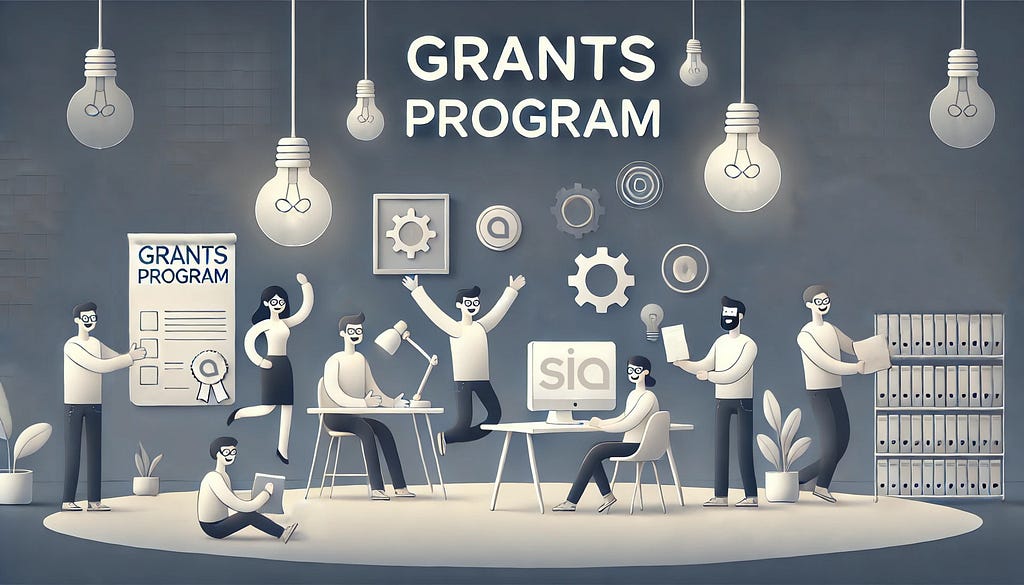The State of Sia, March 2025
2
0

March was a productive and forward-looking month for the Sia ecosystem. Development across core components focused on polishing the v2 architecture, expanding tooling for developers, and improving user experience across the board. The release of new beta versions for hostd and walletd, along with enhancements to renterd and supporting UIs reflects our commitment to making decentralized storage more powerful and accessible. On the grants front, ongoing projects reported significant milestones, including the first release of Dartsia Mobile and continued development on tools like Nydia and sia_vbd.
Development Updates

renterd: Smarter Uploads, Smoother Performance
Development on renterd this month focused on enhancing developer experience and improving internal performance. New features and fixes included:
- MIME type inference for multipart upload creation.
- A dl query parameter to force downloads instead of streaming.
- Compatibility updates for configuration version v111.
- Increased default migrator threads, improving performance during data migrations.
- General improvements to output availability, enhancing contract formation stability.
The renterd UI also saw several refinements:
- Price averages and host geolocation data are now pulled directly from the configured explorer, providing more accurate information to users.
- File downloads behave consistently across all browsers.
- A bug that previously caused the wallet to crash due to v2 contract resolution events was resolved.
hostd: QUIC Support & V2 Contract Tooling
March introduced hostd v2.1.0-beta.3, a feature-rich release that focused on improving connectivity, performance, and contract visibility:
- QUIC support in RHP4, enabling browser-based Sia network access.
- New API endpoints: [GET] /v2/contracts/:id and [POST] /v2/contracts for filtered queries.
- RPCReplenish support, simplifying fund management for renters with many accounts.
- Prometheus support for [GET] /syncer/peers, enhancing monitoring capabilities.
- Fixes for V2 contract root loading and API consistency.
The hostd UI received a number of functional improvements in parallel with backend changes:
- Users can now distinguish between v1 and v2 contracts at a glance with the addition of a version column to the contracts list.
- Volume IDs are now displayed in the volumes tab, making it easier to correlate alerts and system messages.
- The announce button has been removed, with host announcements now handled automatically to reduce manual steps.
- The cmd+k menu was also updated, with the siascan toggle removed and new quick actions added for privacy and security settings.
walletd: Signing Improvements & Output Verification
The release of walletd v2.1.0-beta.1 introduced several notable features that improve both developer tooling and transaction visibility:
- A new Ed25519 key store for generating/importing encrypted signing keys.
- Two new endpoints for checking whether siacoin or siafund outputs have been spent, improving support for atomic swaps.
- Fixes to enable V2 transaction signing from wallets without siafunds.
On the UI side, a longstanding bug that caused v2 transactions to fail for wallets without siafunds has been resolved, significantly improving the reliability of sending transactions across a wider range of wallet types.
explored: Enhanced Scanning & Host Data Accuracy
The explored backend continued its steady evolution this month with upgrades focused on performance and data reliability:
- Faster scanning intervals were introduced, along with more robust handling of both v1 and v2 hosts.
- Improved metrics for v2 storage and transaction output analysis.
- API improvements allow for searching hosts by net address and triggering manual host scans.
- Several bug fixes were also implemented, including more accurate source field reporting for v2 outputs and improved 404 error handling for missing blocks.
Ecosystem: Web, Core, and Infrastructure Updates
Across the wider ecosystem, UI and infrastructure layers received key refinements:
- Fiat currency values, median prices, host geolocation, and all other 3rd party data optionally used in all Sia apps and websites is now sourced from the configured explorer or siascan.
- Legacy Sia Central dependencies were fully removed from all codebases, marking a significant milestone in moving all our optional 3rd party data features to open source foundation software.
Meanwhile, further backend infrastructure improvements included deadline-respecting logic in coreutils, fixes in the core library, and a more resilient desktop installer that better handles network failures during builds.
Grant Program Updates

Progress Reports from Ongoing Grants
- Refurbishing of Sia Satellite: The blueprint and design concept for the next-generation Satellite has been completed, laying a solid foundation for its redevelopment. A preliminary OpenAPI specification was drafted to guide integration, and work began on the Satellite server code itself. Development will continue next month as the backend takes shape.
- SiaGraph: This month, Siagraph removed its reliance on SiaCentral by transitioning fully to its own explored instance. A host troubleshooter API was completed and partially implemented in the frontend, while major backend and database changes were made to support expanded financial data collection. Metrics now include host collateral, revenue, renter activity, Siafund distribution, and more. Static frontend elements were also refactored to ease the transition to v2. Next steps include completing the troubleshooter UI, finalizing v2 support, and turning the collected data into actionable insights.
- S5 Network: The team launched the first version of the Vup Web App, featuring identity creation, account recovery, encrypted uploads, and directory browsing. While still early-stage, core functionality is live at web.vup.app. Design work progressed on the S5 Protocol landing page, and bug fixes were applied to both s5.js and the S5 Dart Node. Next steps include implementing file sharing and WebXDC support in the web app, publishing the new landing page, and pushing the native Vup app toward version 1 with peer-to-peer sync capabilities.
- Nydia — Passkey Holder (Chapter 2): Introduced support for Ed25519, a compact and secure digital signature algorithm now fully supported in Firefox and partially in Chrome. This cryptographic enhancement not only improves performance and security but also strengthens the interoperability of WebAuthn authenticators. Alongside these core changes, the UI’s CSS was modularized for better maintainability and cleaner architecture. Safari compatibility is the next milestone on the roadmap.
- Dartsia Mobile App V2: Dartsia reached a major milestone this month with its first public release on the Google Play Store. This launch marks a key moment for host management on mobile devices and underscores the maturity of the app as a tool for Sia network participants on the go.
- Sia Virtual Block Device (sia_vbd): Version 0.4.0 was released, which added powerful data management features, including branching, tagging, and volume resizing. These additions give users finer control over stored data and pave the way for more sophisticated virtual storage workflows.
- SecureSphere — Decentralized Password Management: Substantial progress towards the MVP has been made, with both the browser extension and mobile app nearing completion. The browser extension now supports encrypted backups, password recovery, and seed phrase authentication, while the mobile app mirrors this functionality and introduces custom Sia node support. Breach monitoring integration and final security testing are planned for April, with the MVP on track for early release ahead of the original deadline.
- Lume Web: Progress on the portal infrastructure continued with the launch of lumeportal.com and significant work on the abuse reporting plugin. The backend for abuse handling was completed, including automated classification, case tracking, and content scanning through ClamAV. While some time was lost attempting to streamline plugin testing, key components like the report intake and case management workflow are now functional. As architectural transitions continue, frontend testing and integration with the dashboard and IPFS plugin are planned for the coming weeks.
- Tiri Vault (ARC data wallet): March marked the completion of Tiri Vault’s upgrade to support renterd v2.0, including a fully functioning relay for bidirectional sync and an integrated wallet feature in the desktop app. Despite challenges related to limited documentation and network instability following the hardfork, the team made steady progress. April will focus on bug fixes, especially within the wallet and sync logic, as well as exploring smart contract-based password and document storage in a future integration.
Final Thoughts
March’s updates reflect a continued investment in strengthening the v2 Sia architecture while streamlining the developer and user experience. From performance enhancements in renterd and explored to powerful new capabilities in hostd and walletd, the network is in a stronger position than ever. Ongoing grant projects are showing solid momentum, and the community’s dedication is driving real progress toward a decentralized future.
That’s all folks!
Thanks for your continued support and dedication as we build the foundation of the decentralized future.
See you next month!
Stay connected: Discord, Email
Want to be the first to read our latest blog posts? Subscribe or follow to receive instant updates the moment they’re published — no need to wait for social media announcements.
If you found this article insightful, share it with your network to help spread awareness about the importance of decentralized storage.
The State of Sia, March 2025 was originally published in The Sia Blog on Medium, where people are continuing the conversation by highlighting and responding to this story.
2
0
 Manage all your crypto, NFT and DeFi from one place
Manage all your crypto, NFT and DeFi from one placeSecurely connect the portfolio you’re using to start.




